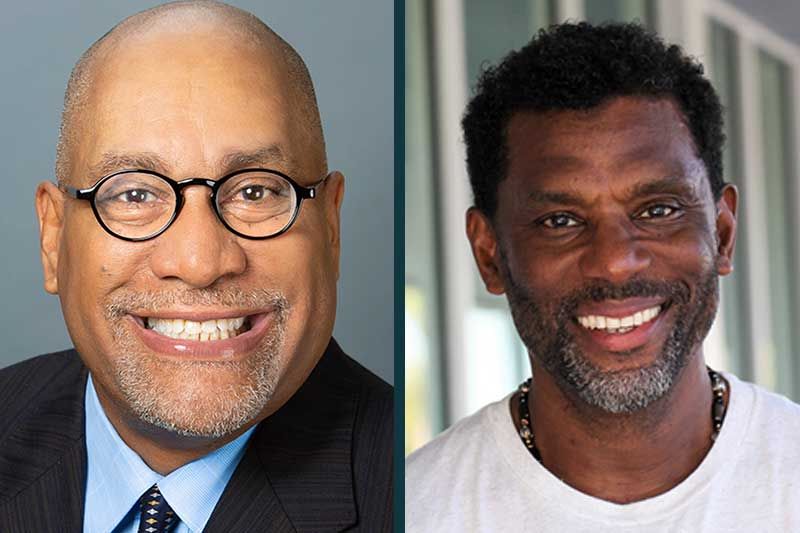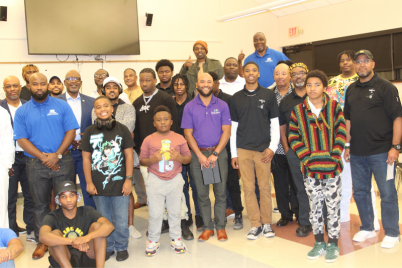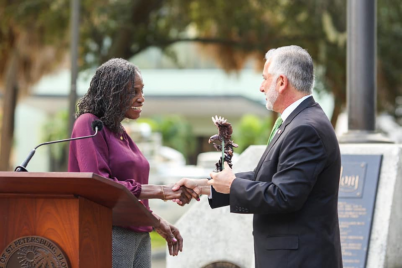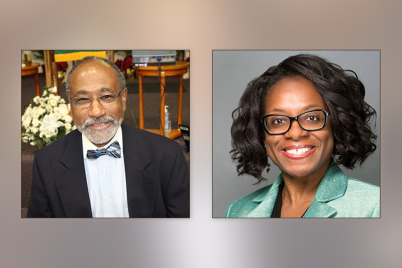Carl Lavender, chief equity officer for the Foundation for a Healthy St. Petersburg and Clayton Sizemore of Mindful Movement Florida
By J.A. Jones, Staff Writer
ST. PETERSBURG – On the Sept. 5 airing of “Equity Now,” radio host Carl Lavender, chief equity officer for the Foundation for a Healthy St. Petersburg, sat down with Clayton Sizemore of Mindful Movement Florida (MMF) to discuss the practice of mindfulness as a strategy to create health in mind and body. The program airs Saturdays at 10:30 a.m. on WMTP.
“MMF takes a 360-degree approach to helping individuals become their well-balanced, healthy selves. We lead and serve in underserved communities with holistic approaches,” shared Sizemore.
Serving both adults and youth, MMF offers classes in beginning and advanced yoga postures, meditation, breathing techniques, and positive affirmations.
“The goal for our clients is to discover their physical and mental strength in order to better understand their long-term health improvement,” said Sizemore.
He added that, especially now, during the stress and trauma of COVID-19, it is even more vital to find a sustainable practice and enhance every aspect of one’s life.
“The practice of yoga is one of the most importance things that you can do. A lot of people have a lot of misconceptions about it, but it’s one of the purest, easiest, and most natural forms of exercise,” asserted Sizemore.
He came to yoga and mindfulness after working in broadcasting in New York City for nearly three decades. After rising through the ranks to become the broadcast director of CNN, when Sizemore was ready to retire, he realized it was time to “do something that really spoke to me.”
He decided to move into philanthropy and began working with a nonprofit organization called Urban Yoga Foundation. It was there, Sizemore said, that he found his next calling: to bring mindful movement practices to underserved communities.
Relocating to Florida to begin that work made sense since Sizemore noted, “I’d been coming to St. Petersburg for 28 years, and really love this community.”
Lavender observed that some people wouldn’t connect underserved communities and yoga, since many community members rely on faith, prayer, and the church. He asked Sizemore how he could bring these communities this “rather new-age approach to problem-solving and thinking positively.”
Sizemore said that, while yoga and mindfulness can be integrated, mindfulness is naturally a part of any mental or physical exercise. In his work with young people, Sizemore says the focus is on “mindful activities.”
“When I talk about yoga, I’m talking about a practice, a means by which you keep your mind strong, your body flexible, and your heart strong,” acknowledged Sizemore.
He shared that mindfulness means maintaining a moment-by-moment awareness of our thoughts, feelings, bodily sensations, and surrounding environment – and that the work is done “through a gentle, nurturing lens.”
He also noted that mindfulness involves acceptance: “Meaning that we pay attention to our thoughts and our feelings without judging them, without believing that there is a right or wrong way to think or feel in a given moment.” When we practice mindfulness, Sizemore added, our thoughts tune into what we are sensing in the present moment, “rather than rehashing the past or imagining the future.”
The act of bringing mindfulness to everything we do – from thinking about what one is eating to what one is doing – is what contributes to deep and meaningful changes, according to Sizemore. “When you become more mindful, it makes you more grounded in everything that you’re about, and everything that you do.”
Lavender asked him to share some examples of “mindfulness moments,” and Sizemore led the listening audience through three simple, easy-to-do mindfulness exercises. Encouraging listeners to move into a seated position, the first exercise was a simple breathing exercise:
- Sit with your spine straight, parallel to the ground.
- Close your eyes, focus on your breath, inhale through your nose, exhale through your mouth. Deliberately try to slow your breath down.
Next, Sizemore shared examples of Positive affirmations:
- In a seated position, repeat positive and uplifting messages to yourself.
- Use phrases such as “I’m the architect of my life.” “My body is healthy.” “My mind is brilliant.” “My soul is tranquil.” “I am superior to negative thoughts and low actions.”
The third method Sizemore shared was simply to “Get up and go take a walkout in nature: find parks, or woods, and reconnect with nature.”
Lavender asked Sizemore how mindfulness might assist as a strategy for those who were struggling with the violent attacks on Blacks by police, and ongoing racial strife in the media.
Sizemore gave respect to the young people involved in the protesting and noted that “Knowledge is power. We have to understand the past to honor the future. There’s so much more work to do. But we have to be mindful about what we’re doing – and think before we react.”
Noting the importance of self-control and being able to self-calm during these stressful times, Sizemore noted that breath was essential to the parasympathetic and sympathetic nervous system, which controls the body’s homeostasis. In this manner, mindfulness regarding our breathing impacts our ability to relax and calm ourselves, slow ourselves down, and think better.








